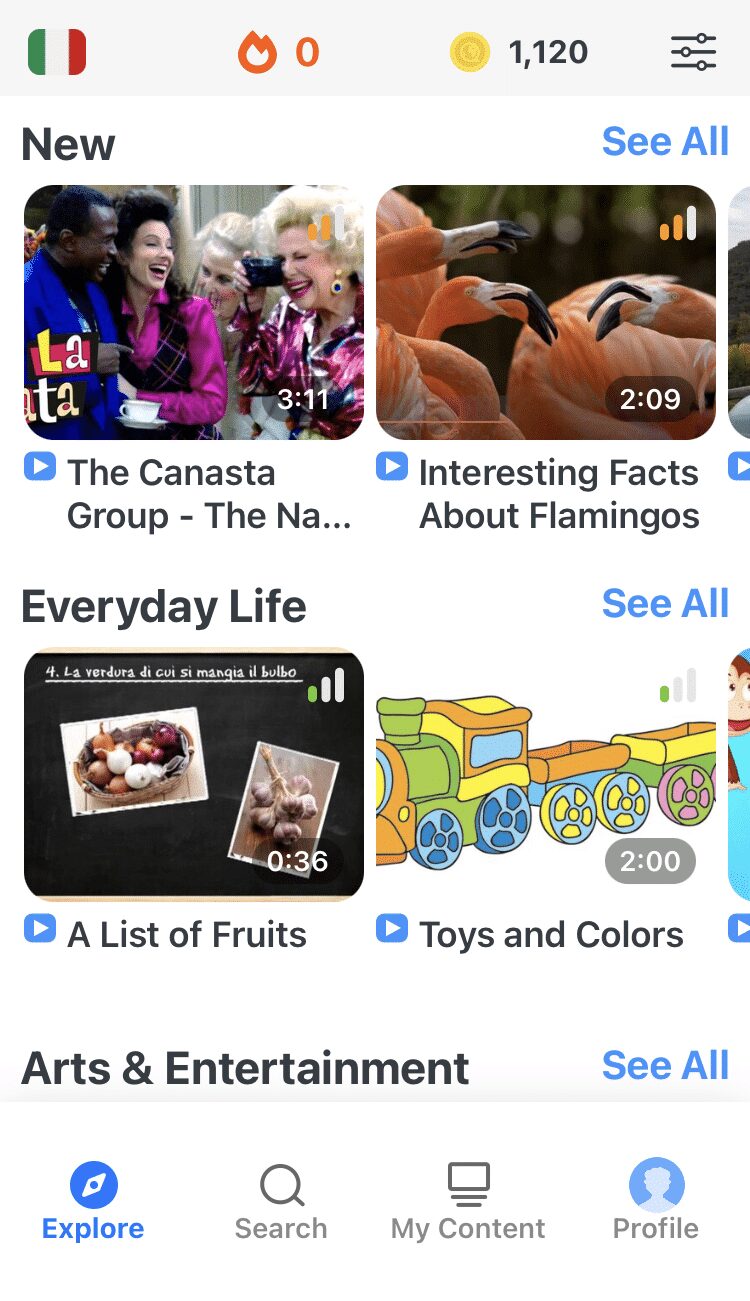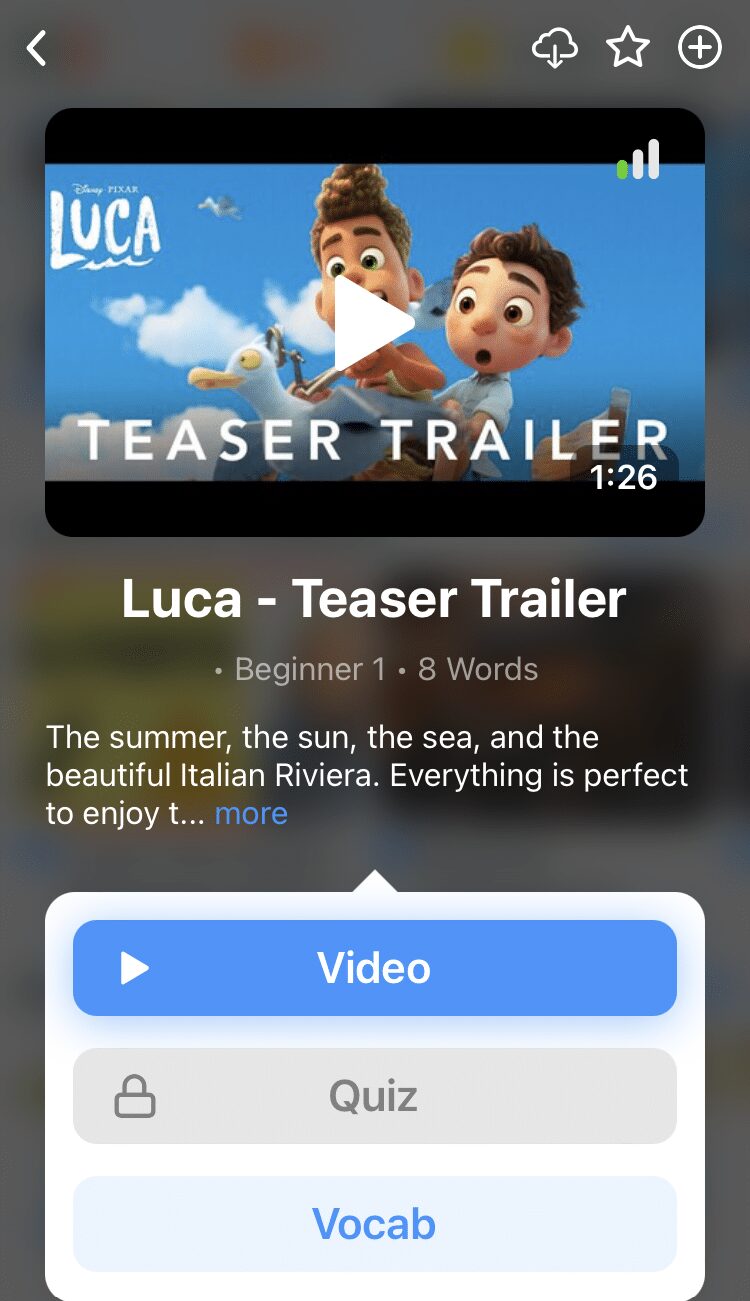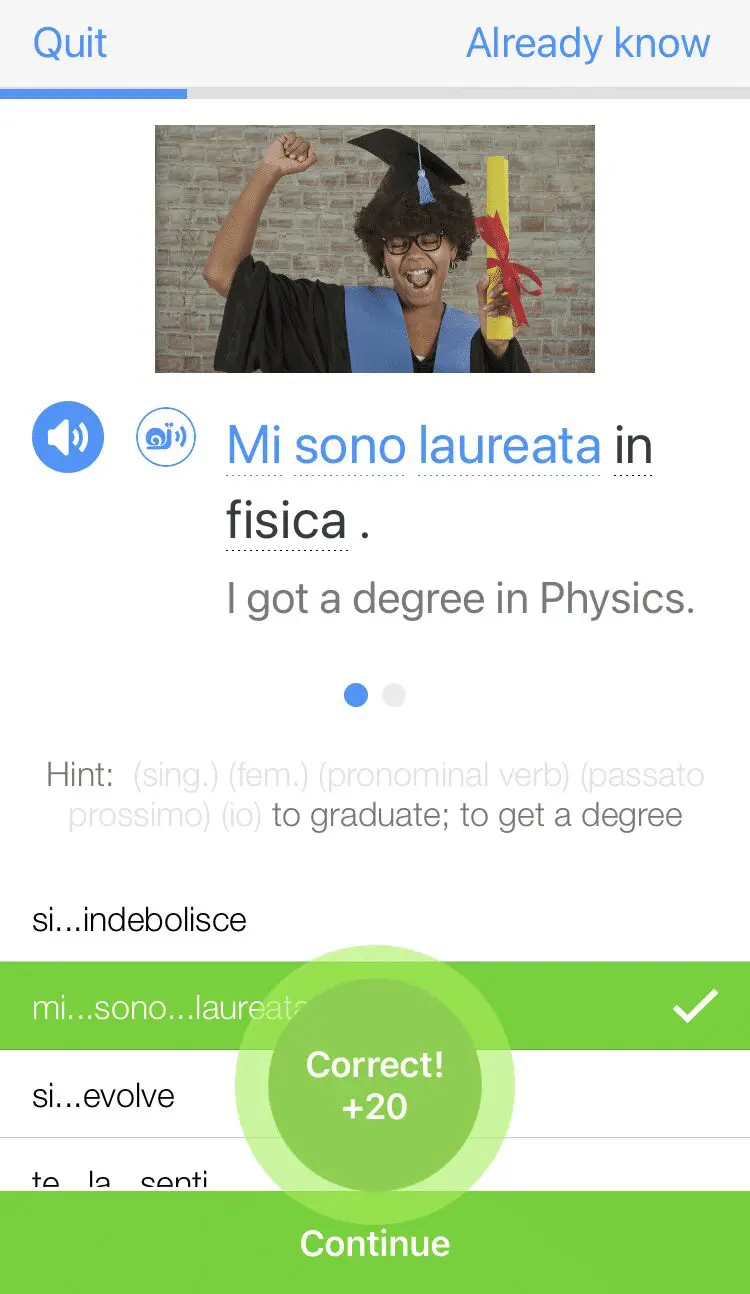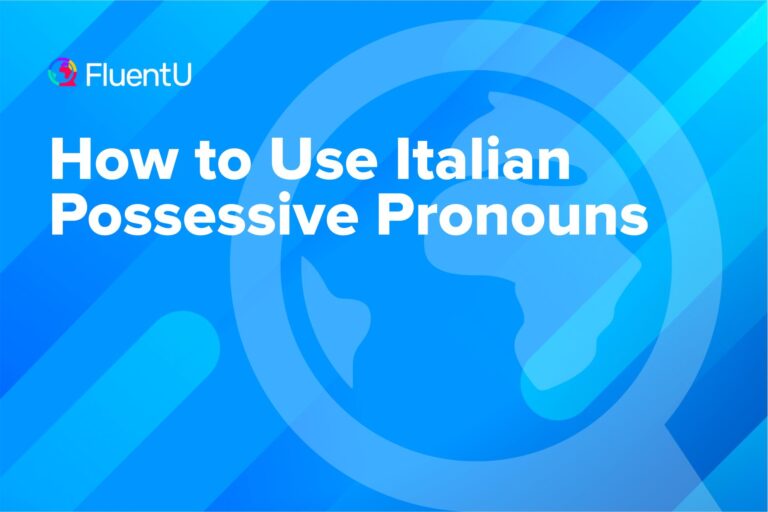Guide to the Italian Present Continuous

If you want to be able to explain what’s going on in the here and now, you’ll need to master the Italian present continuous. Fortunately, this tense isn’t a terribly tricky element of Italian grammar.
Let’s go over all the essentials you need to form the Italian present continuous tense and use it in real-world speech or writing.
Download: This blog post is available as a convenient and portable PDF that you can take anywhere. Click here to get a copy. (Download)
What Is the Italian Present Continuous?
We use the present continuous (also called the present progressive) to say what’s happening right now. It corresponds to the English verb ending “-ing” used with the present tense of “to be,” as in, “I am reading.”
In Italian, you may’ve already seen or heard it with verbs ending in –ando and –endo (these verbs are called gerunds). This is a relatively regular tense, so the conjugations are pretty easy to memorize.
You should only employ the present continuous for things happening right now. More often, when talking about the present, you simply use the regular present tense (also called the present indicative).
How to Form the Italian Present Continuous
To make the present continuous, you first need the helper verb stare. In other contexts, stare can mean “to stay” (among other definitions), but here it works something like the English helper verb “to be.” Its conjugation is irregular:
| Italian | English |
|---|---|
| io sto | I am |
| tu stai | you (singular, informal) are |
| lui / lei / Lei sta | he/she is, you (formal) are |
| noi stiamo | we are |
| voi state | you (plural) are |
| loro stanno | they are |
You’ll then tack on your main verb with its gerund ending. To do this, drop the -are, -ere or -ire ending from the infinitive of the verb and add –ando onto the stem of –are verbs and –endo onto the stem of –ere and -ire verbs. For example:
cantare — to sing
cant- + -ando = cantando (singing)
venire — to come
ven- + -endo = venendo (coming)
To make a full phrase, we combine the helper verb stare conjugated for the subject we want, followed by the main verb. As with other Italian sentences, you don’t necessarily need to state the subject pronoun if it’s obvious from the context.
(io) sto cantando — I’m singing
(loro) stanno venendo — they are coming
In a sentence, it looks like this:
I miei genitori stanno venendo qui dalla Francia. — My parents are coming here (i.e., en route right now) from France.
Irregular Verbs in the Present Continuous
The irregular verbs to worry about with this tense are simply the contracted infinitives. If you’ve studied your present tense irregular verbs well, you already know the “expanded” stems that’ll come into play here rather than the infinitive stems. Here are a couple of them:
bere — to drink
In questo momento sta bevendo birra. — At this moment he’s drinking beer.
fare — to do/make
Non possono uscire perché stanno facendo la pennichella. — They can’t go out because they’re taking their naps.
Other contracted infinitive forms include:
condurre (to drive/to lead) — conducendo (driving/leading)
dire (to say) — dicendo (saying)
trarre (to bring/to pull) — traendo (pulling/bringing)
porre (to put/to lay/to set) — ponendo (putting/laying/setting)
When you know these, you can also make gerunds from their sister verbs in the same way. For example, attrarre (to attract) works just like trarre; it becomes attraendo. Likewise with contrarre (to contract), estrarre (to extract), distrarre (to distract) and sottrarre (to subtract).
If the present continuous is used with personal pronouns, those usually come before the verbal phrase. For example:
Ci stiamo vestendo! — We’re getting dressed!
When to Use the Present Continuous in Italian
Before you roll out the present continuous, ask yourself: Do I want to emphasize that this action is taking place right now? For example, I could say:
Che stanno facendo? — What are they doing?
This wouldn’t be a way for me to ask what they generally do for a job or in their free time. I want to know what these people are currently doing at the moment of speaking. Perhaps they’re making me late and I want to know what’s taking them so long, for instance.
The question could be interpreted as a bit more insistent or anxious than if I were to ask:
Che fanno? — What are they doing?/What do they do?
Both English translations are possible. This question could mean about the same as Che stanno facendo? above, but depending on the context it could also be asking what they generally do (at this time of day, in life, what they enjoy, what they’ve been up to lately, etc.).
Here are some more examples that contrast the present continuous from the present indicative tense:
| Present Continuous | Present Indicative |
|---|---|
| Sta’ zitto! Sto ascoltando un podcast!
(Be quiet! I’m listening to a podcast!) | Ascolto molti podcast in italiano.
(I listen to many podcasts in Italian.) |
| I bambini stanno giocando nel parco.
(The kids are playing in the park.) | La domenica giocano nel parco.
(They play in the park on Sundays.) |
| Io e Micol stiamo provando i passi di danza.
(Micol and I are practicing the dance steps.) | Pratichiamo i nuovi passi una volta alla settimana.
(We practice the new steps once a week.) |
It’s important to note that you don’t use the present progressive to talk about the immediate future, as you would in English with a sentence like, “Tomorrow I’m going to the store.” Talking about the future requires the future tense.
How to Practice the Present Continuous
To get more comfortable with the present continuous, you could study a few flashcards or watch a couple of videos and listen for its usage. It can also be useful to practice by role-playing situations and talking about what people are doing right at the moment.
If that feels too ridiculous, try looking at pictures in Italian newspapers or magazines and reporting on the situations as if they were happening right in front of you. You can also practice this tense by listening to how native speakers use it in action with a program like FluentU.
FluentU takes authentic videos—like music videos, movie trailers, news and inspiring talks—and turns them into personalized language learning lessons.
You can try FluentU for free for 2 weeks. Check out the website or download the iOS app or Android app.
P.S. Click here to take advantage of our current sale! (Expires at the end of this month.)
The Italian present continuous tense can get easily overlooked in language exchanges or conversation classes. Students and teachers tend towards conversations about general topics or past events that don’t trigger this tense.
For this reason, it’s important to practice the present continuous so you can feel confident talking about what’s happening now and live in the present moment.
Download: This blog post is available as a convenient and portable PDF that you can take anywhere. Click here to get a copy. (Download)
And One More Thing...
If you're as busy as most of us, you don't always have time for lengthy language lessons. The solution? FluentU!
Learn Italian with funny commericals, documentary excerpts and web series, as you can see here:

FluentU helps you get comfortable with everyday Italian by combining all the benefits of complete immersion and native-level conversations with interactive subtitles. Tap on any word to instantly see an image, in-context definition, example sentences and other videos in which the word is used.

Access a complete interactive transcript of every video under the Dialogue tab, and review words and phrases with convenient audio clips under Vocab.

Once you've watched a video, you can use FluentU's quizzes to actively practice all the vocabulary in that video. Swipe left or right to see more examples of the word you’re on.

FluentU will even keep track of all the Italian words you’re learning, and give you extra practice with difficult words. Plus, it'll tell you exactly when it's time for review. Now that's a 100% personalized experience!
The best part? You can try FluentU for free with a trial.
Start using the FluentU website on your computer or tablet or, better yet, download the FluentU app from the iTunes or Google Play store. Click here to take advantage of our current sale! (Expires at the end of this month.)








